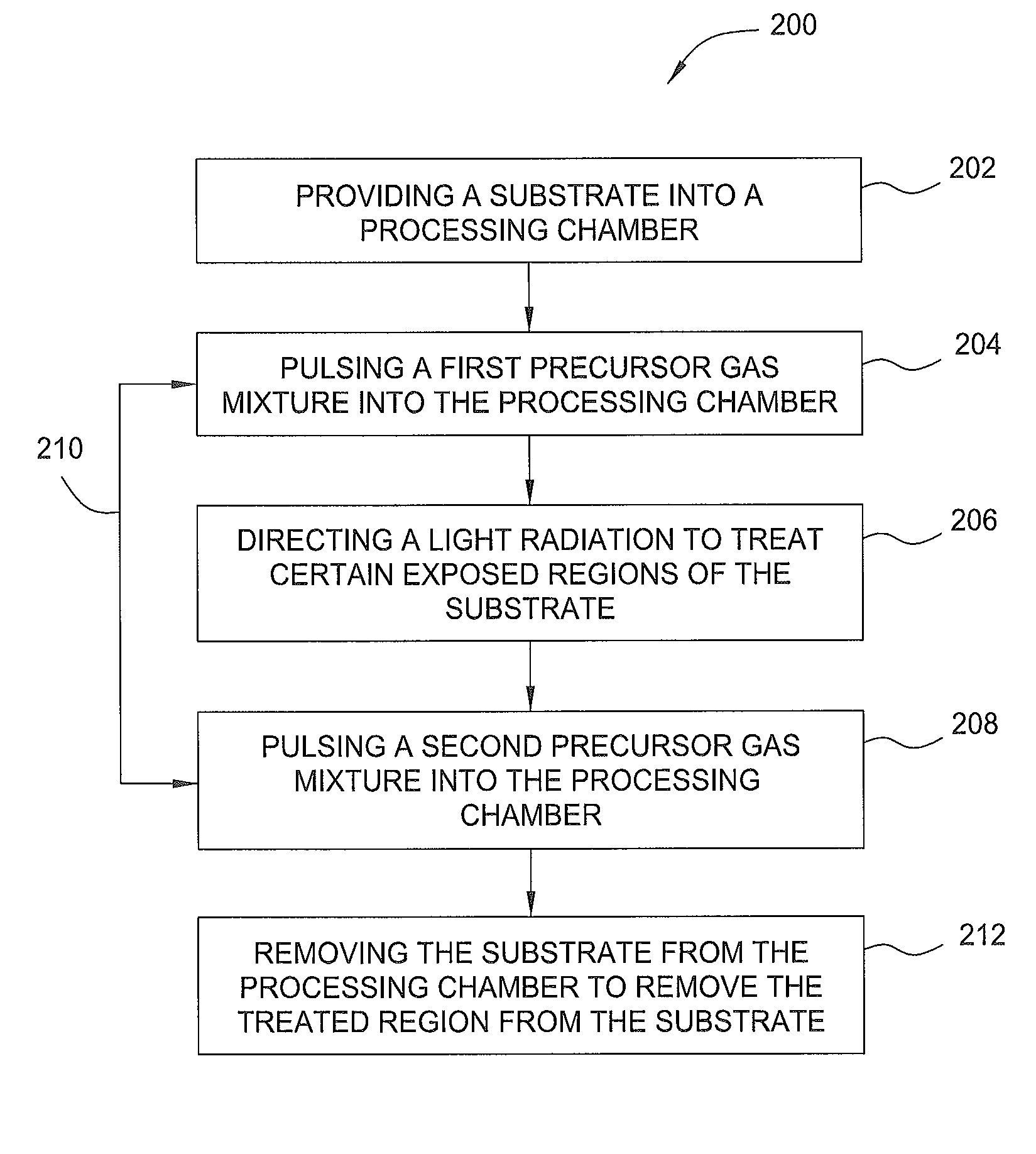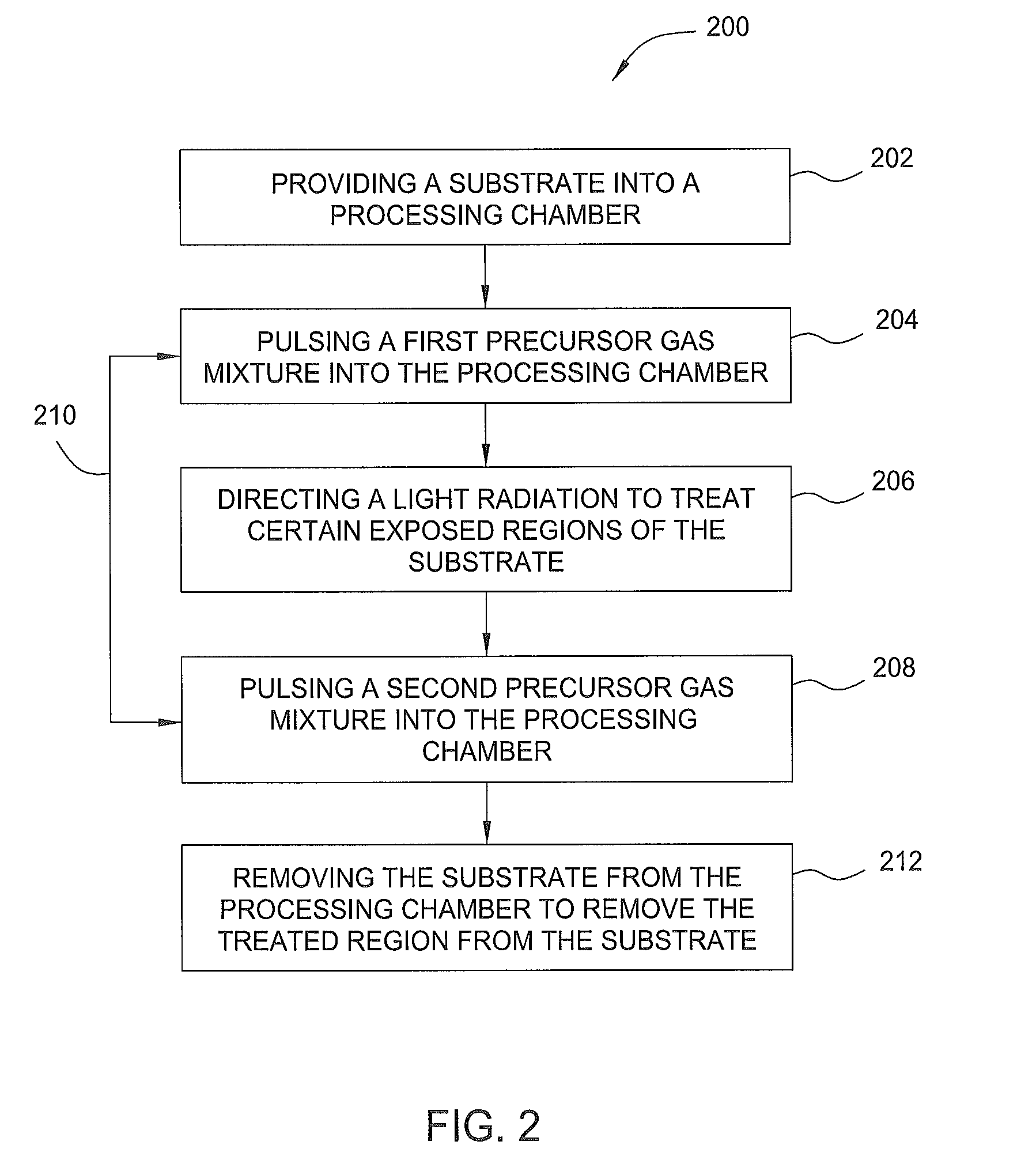Atomic layer deposition lithography
a lithography and layer technology, applied in the field of atomic layer deposition lithography process, can solve the problems of inability to successfully transfer structures onto the substrate surface, the lithography process has become more and more difficult to achieve precisely and accurately transfer even small features onto the substrate, and the integration circuit has evolved into complex devices
- Summary
- Abstract
- Description
- Claims
- Application Information
AI Technical Summary
Benefits of technology
Problems solved by technology
Method used
Image
Examples
Embodiment Construction
[0018]Methods and an apparatus for performing an atomic layer deposition (ALD) lithography process are provided in the present disclosure. The ALD lithography process utilizes an ALD process along with a lithography process to form features onto a substrate surface without using a conventional photoresist layer and / or a hardmask layer. The ALD lithography processing chamber provides a dual function; to deposit an atomic layer deposited layer and to perform a lithography process (e.g., energy beam treatment process) to form features / structures on the atomic layer deposited layer. The substrate may include one or more nonconductive materials, such as silicon, silicon oxide, doped silicon, germanium, gallium arsenide, glass, and sapphire. The substrate may also include dielectric materials such as silicon dioxide, organosilicates, and carbon doped silicon oxides. Further, the substrate can include any other materials such as metal nitrides and metal alloys, depending on the application...
PUM
| Property | Measurement | Unit |
|---|---|---|
| wavelength | aaaaa | aaaaa |
| wavelength | aaaaa | aaaaa |
| diameters | aaaaa | aaaaa |
Abstract
Description
Claims
Application Information
 Login to View More
Login to View More - R&D
- Intellectual Property
- Life Sciences
- Materials
- Tech Scout
- Unparalleled Data Quality
- Higher Quality Content
- 60% Fewer Hallucinations
Browse by: Latest US Patents, China's latest patents, Technical Efficacy Thesaurus, Application Domain, Technology Topic, Popular Technical Reports.
© 2025 PatSnap. All rights reserved.Legal|Privacy policy|Modern Slavery Act Transparency Statement|Sitemap|About US| Contact US: help@patsnap.com



